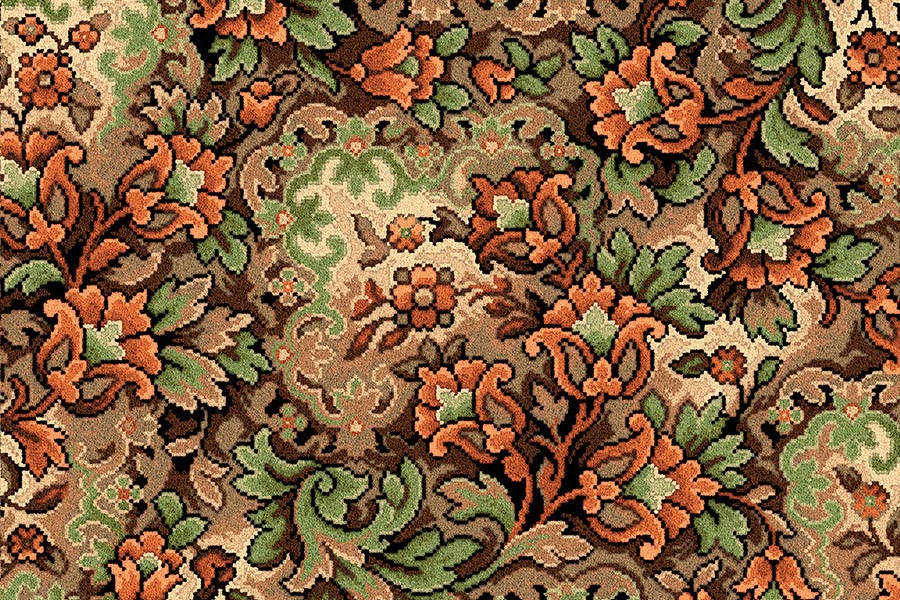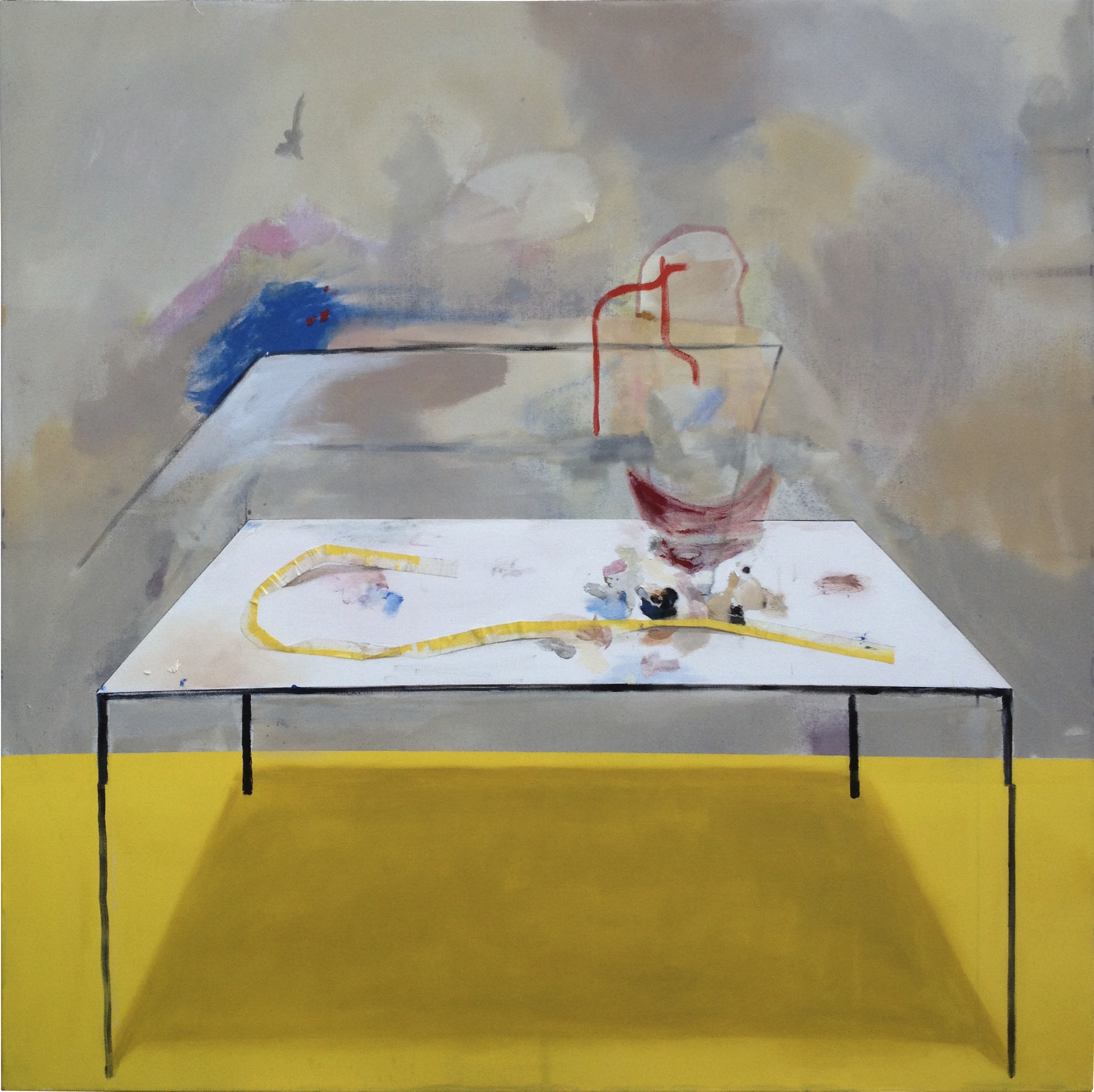Michelle Malone’s exhibition, O, To have a little house, at the LAB, presented a personal past as a gigantic, multidisciplinary memory. Sculptural installations, audio, tapestry, and archival video combined to illuminate recent Irish histories of suburban social housing. Most strikingly, the ground floor of the gallery was retrofitted with a section of a home – a fake house, serving as index of a real past, containing a generous, chunky, and uncannily life-size living room, stairs, and faux garden. Old-fashioned carpet patterns appeared lush and brand new. The garden soil looked healthy, with no weeds in sight. There were no titles for the pieces, making a single unit out of a diverse range of objects. Moving through the exhibition felt like navigating the insides of a memory.
Malone plays with the past as it is generally imagined, assumed, or forgotten, introducing her own memories as material documents. The scale of the reconstructed house at the LAB elevated the value, power, and memory of her grandmother’s home. Digital tapestries also adorned the space, their delicate and bold details acting as a repository of the artist’s recollections. They hung confidently in the reconstructed house, complicating it into a home. Homes typically accumulate excess and semi-meaningless things. Drawers get filled with old cables, batteries, pen lids, adapters; or rooms fill up with fleeting tensions, misunderstandings, chat. In Malone’s hands, we see only the exteriors, the surfaces and walls, perfect and proud. The digital weave of the tapestries stands in for the excess and activity of a home. Bit by bit, they make an image of a room, capturing all its complexities, its weight, pressure, joy, and comfort, as if the work of the weave were magnetically pulling bits into a beautiful, laboured image.
Michelle Malone, O, To have a little house, 2022, installation view, The LAB Gallery. Image courtesy the Dublin City Arts Office.
The back room showed recordings from the RTÉ archives featuring families moving into newly built houses in Finglas in the 1960s the sounds of which audibly spilled into the main gallery space. These sounds occasionally mashed with the voice of the artist’s grandmother reading Pádraic Colum’s poem, ‘An Old Woman of the Roads’, opening up an unexpected encounter between archive and poetry. The constructed house produced abstracted linear compositions through viewfinders and slices in the structure. Angles created further images, new forms constituted briefly and purely of line and negative space. The carpet clung to the house’s interior wall. Stairs led nowhere, making them seem ornate and distinguished, imbued with as much meaning as any other space in the house. Staircases can be confession boxes, escape routes, and performing platforms, places for impromptu, secret conversations; their role in a house edges deceptively beyond the practical.

Michelle Malone, O, To have a little house, 2022, installation view, The LAB Gallery. Image courtesy the Dublin City Arts Office.
In the upstairs gallery, pebbledash was undone and loosely spread across sections on the ground, like patches of snow indoors. Home furniture tucked into its soft ground. Lace covered the walls in conversation with the pre-pebbledash pebble. Their whiteness added to the already ambient, heavenly feel from the upper level, creating an abstracted, maybe more true, dreamlike layer of the artist’s memories. A chest of drawers on entry worked as a partition wall, providing an intimate feel to the rest of the space. The delph on the chest of drawers acted as physical citations to the recording of ‘An Old Woman of the Roads’ as it described ‘a dresser filled with shining delph’, looped through a speaker, nestled comfortably in the pebbles. This section of the show echoed Félix González-Torres’s installations, though it was more heavily furnished and the audience’s participation was purely tacit. Material was geographically specific, personal to the artist’s life.
Details including floral wallpaper, tiling, a gas cooker, a washing machine, and what appeared to be a small statue of the Child of Prague, placed among pots and pans, were depicted in tapestries, pointing to a time when these items were new and full of promise; a twentieth-century gas cooker is more likely to be familiar now as a worn, rusted, and stained object. Malone’s pieces make the details of a working-class home immediate, full of political significance. Her work also asks how symbols of these homes can be useful in a contemporary context. Addressing a single home as a piece of history, as Malone has done in this exhibition, also highlights the hundreds and thousands of homes and dispersed multiple memories yet to be considered. It is through the details of these homes – molecular, like pebbledash itself, endless, uncapturable – that the meaning of a period and a history can be understood.
Michelle Malone, O, To have a little house, 2022, installation view, The LAB Gallery. Image courtesy the Dublin City Arts Office.
A free-standing enlarged silhouette of the Child of Prague seemed slightly disjointed in the separate exhibition space facing the street by the LAB’s entrance, yet it was also ceremonial in its magnified and simplified presence, a symbol digging its heels into a gallery space. In fact, the most effective view of the exhibition in its totality was to be gained from the street outside, through the LAB’s double-length, floor-to-ceiling windows. Looking back, after exiting , this experiential body of work was reframed as a series of sculptural objects. It was as if Malone was reminding you that these constructed memories were not (or never could be) real. They were something new, reshaped in the form of sculptural works that expanded and shifted memory into another vocabulary and sphere of logic. Malone’s manifestation of memory had an athletic quality: muscular, material knowledge, and personal truths were combined to make powerful symbols out of pebbledash, public and private stairs, the ‘good’ room, the patterned carpet, the religious statues and lace – elements of a new vocabulary to articulate the interior meanings of a home.
Jennie Taylor is an art writer living and working in Dublin, Ireland.






